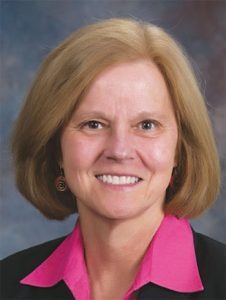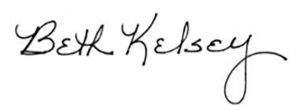Dear Colleagues,
At the time I am writing this, I am filled with many emotions about the inhumanities of the war in Ukraine. By the time this issue of the journal reaches you, I can only hope that the strength of the Ukrainian people and support from countries around the globe will bring them brighter days. I know there are many avenues for each of us to reach out in some small way to help and to let them know we care. I am not advocating for any particular avenue as I know you are all finding the way that fits best for you.

On a more positive note, it seems the world is opening back up as the pandemic recedes. There do remain concerns and we may not be returning to the old normal, at least not for a while. We need to continue to encourage everyone who can to get vaccinated, to get tested when needed, and to protect those who are most vulnerable to infection and its consequences. Even as the number of new infections decline, we will be seeing patients with long-Covid symptoms. All healthcare providers have experienced stress during the pandemic that has caused mental and physical fatigue and professional burnout. I am looking forward to seeing better post-Covid days coming.
On the journal forefront, our editorial advisory board met in February to share ideas on ways to expand our content and to reach a wider audience recognizing the various stages in professional careers our readers represent. Please join us in this effort by sharing reflections on your own professional journey that you believe could help other WHNPs as they contemplate their present and future. You can do this by writing and submitting a manuscript in the journal’s short commentary format, information about which can be found in the author guidelines. Here are two ideas for consideration.
Are you a WHNP who has earned an additional academic degree? This might be a graduate degree in public health, a PhD degree, an education doctorate, a law degree, or other. Decisions about additional education may come at different times in one’s career and for varied reasons. If you are one of these WHNPs, we would like to hear about your journey. Tell us why you made your decision and how it has affected your WHNP role. Writing a commentary about your experience provides an opportunity to share that may help other WHNPs who are considering such further education.
Are you a WHNP who has been in clinical practice for 2 to 5 years? What did you learn in the first 1 to 2 years after graduation that you wish you had known earlier? If you want to share these early clinical career pearls with WHNPs almost ready to graduate or newly graduated as they begin their new role, I encourage you to submit a commentary manuscript. The focus could be on the clinical practice or business aspect of being a WHNP.
Whether you are ready to write for publication or not, you can help to expand the reach of the journal through social media. If you read an article that you find noteworthy, spread the word about it to colleagues via LinkedIn, Twitter, Facebook, or Instagram. Our journal digital content editor, Dave Gilmartin, provides a few tips for sharing articles. Basically, type your message, link to the article, and post.
Use the hashtags #nursepractitioner and #womenshealth and then add other hashtags more specific to the topic of the article, such as #menopause. Hashtags can be at the end or within the post. These are words or multi-word phrases that categorize content and track topics on social media. People use them to search for content in which they are interested. As you start typing a hashtag, each social platform will show you how often it is being used, so you can adjust your hashtag to potentially reach a larger audience. When you add the link to the article from our journal website, it will automatically generate a preview that will display in your post. The exception is that Instagram doesn’t allow document links but does allow photos.
If you tag the journal’s social media account for whichever platform you are using, we can share your post to a wider audience. This starts with @, that is, Facebook:@npwomenshealthcare; LinkedIn: @womenshealthcarea-clinicaljournalfornps; Instagram: @womenshealthcarenp; Twitter:@NPWomensHealth.
Here is an example using LinkedIn: Have you considered incorporating #telehealth to improve access and convenience for #olderwomen in your practice? Learn about advantages and disadvantages from provider and patient perspectives. #nursepractitioner #womenshealth @womenshealthcareaclinicaljournalfornps https://www.npwomenshealthcare.com/telehealth-for-older-women-practice-considerations-for-the-whnp/. I hope to see your posts on journal articles on social media.

Beth Kelsey, EdD, APRN, WHNP-BC, FAANP

